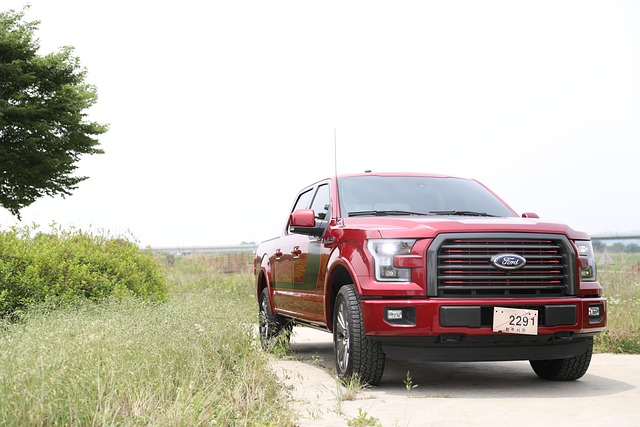Looking to register your car in California? This guide walks you through the entire process, from understanding key requirements to obtaining your license plate. First, familiarize yourself with California’s car registration mandates, then gather essential documents for a seamless DMV visit. Next, perform a crucial dmv vin verification step. After completing the application and fees, secure your license plate and officially register your vehicle.
- Understand California Car Registration Requirements
- Gather Necessary Documents for DMV Visit
- Perform Vehicle Identification Number (VIN) Verification
- Complete Application and Pay Fees at DMV
- Obtain License Plate and Register Your Vehicle
Understand California Car Registration Requirements

Before registering your car in California, it’s crucial to understand the state’s specific requirements. The California Department of Motor Vehicles (DMV) mandates several steps for new and transferred vehicle registrations, including a thorough inspection process. One key component is the DMV VIN verification, which ensures that the vehicle’s unique identifier matches the information on record. This step is vital to prevent fraud and ensure compliance with state laws.
Additionally, you may opt for a mobile vin inspection or verification service, providing convenience during the registration process. These services streamline the typically time-consuming task of gathering documents and visiting the DMV by allowing you to complete the necessary checks from the comfort of your own home or location of choice.
Gather Necessary Documents for DMV Visit

Before heading to the DMV, ensure you gather all the essential documents required for car registration. This includes your vehicle’s registration certificate from the previous state (if applicable), proof of insurance, and a valid driver’s license. Additionally, you’ll need the Vehicle Identification Number (VIN) from your car, which can be located on the vehicle’s title or through a quick and convenient mobile vin inspection or mobile vin verifier.
A dmv vin verification is a crucial step in the registration process as it ensures the DMV has accurate information about your vehicle. It’s advisable to double-check that all documents are up to date and in order to avoid any delays during your visit.
Perform Vehicle Identification Number (VIN) Verification

Before proceeding with the registration process, it’s crucial to undergo a DMV (Department of Motor Vehicles) VIN verification. This step is essential as it ensures that your vehicle’s identification number (VIN) matches the details in our records. Many methods are available for this vin inspection, including using a mobile vin verifier or conducting a manual check by entering the VIN into the DMV’s online system. A simple and efficient way to verify is through a mobile vin verification service, which can provide instant results and save you time.
During this process, the DMV will cross-reference the information on your vehicle with their databases, including the make, model, year, and other critical data. This step prevents fraud and ensures that only legitimate vehicles are registered. Proper VIN inspection is a vital part of maintaining California’s comprehensive motor vehicle records, helping to identify stolen vehicles and ensuring road safety for all drivers.
Complete Application and Pay Fees at DMV

Once you have gathered all the required documents and information, it’s time to visit or complete your application at the DMV. You’ll need to fill out a Vehicle Registration Application form, providing details like your personal info, vehicle specifications, and ensuring accurate and up-to-date insurance coverage. A key step in this process involves completing a DMV vin verification by providing the unique Vehicle Identification Number (VIN) of your car. This allows the DMV to cross-check the vehicle’s history and ensure it complies with all regulations.
Along with your application, you’ll be required to pay the necessary registration fees. These can vary based on factors like the type of vehicle, its weight, and emissions standards. You can typically make these payments online or in person at a DMV office. If you prefer a mobile vin inspection or mobile vin verifier, there are services that offer these options, making it more convenient to complete your registration without visiting a physical location.
Obtain License Plate and Register Your Vehicle

Once you’ve gathered all necessary documents and confirmed your vehicle’s eligibility for registration, it’s time to obtain a license plate and officially register your vehicle with the California Department of Motor Vehicles (DMV). Begin by visiting your nearest DMV field office or using their online services to request a license plate. You’ll need to provide information like your vehicle’s make, model, year, and the current odometer reading during this process.
To ensure a smooth registration experience, consider utilizing a mobile VIN verification service. These services allow you to obtain important vehicle history data, including accident reports and outstanding liens, through a simple inspection of your Vehicle Identification Number (VIN). A mobile vin verifier can save you time by providing instant access to critical information, which is especially useful when dealing with the DMV or potential buyers in the future.
Registering a car in California involves understanding the state’s requirements, gathering essential documents, verifying your vehicle’s VIN (a crucial step for dmv vin verification), completing an application at the DMV, and paying the necessary fees. Once these steps are successfully concluded, you’ll receive your license plate and officially register your vehicle. This process ensures compliance with California’s regulations, enabling you to legally operate your car within the state.
